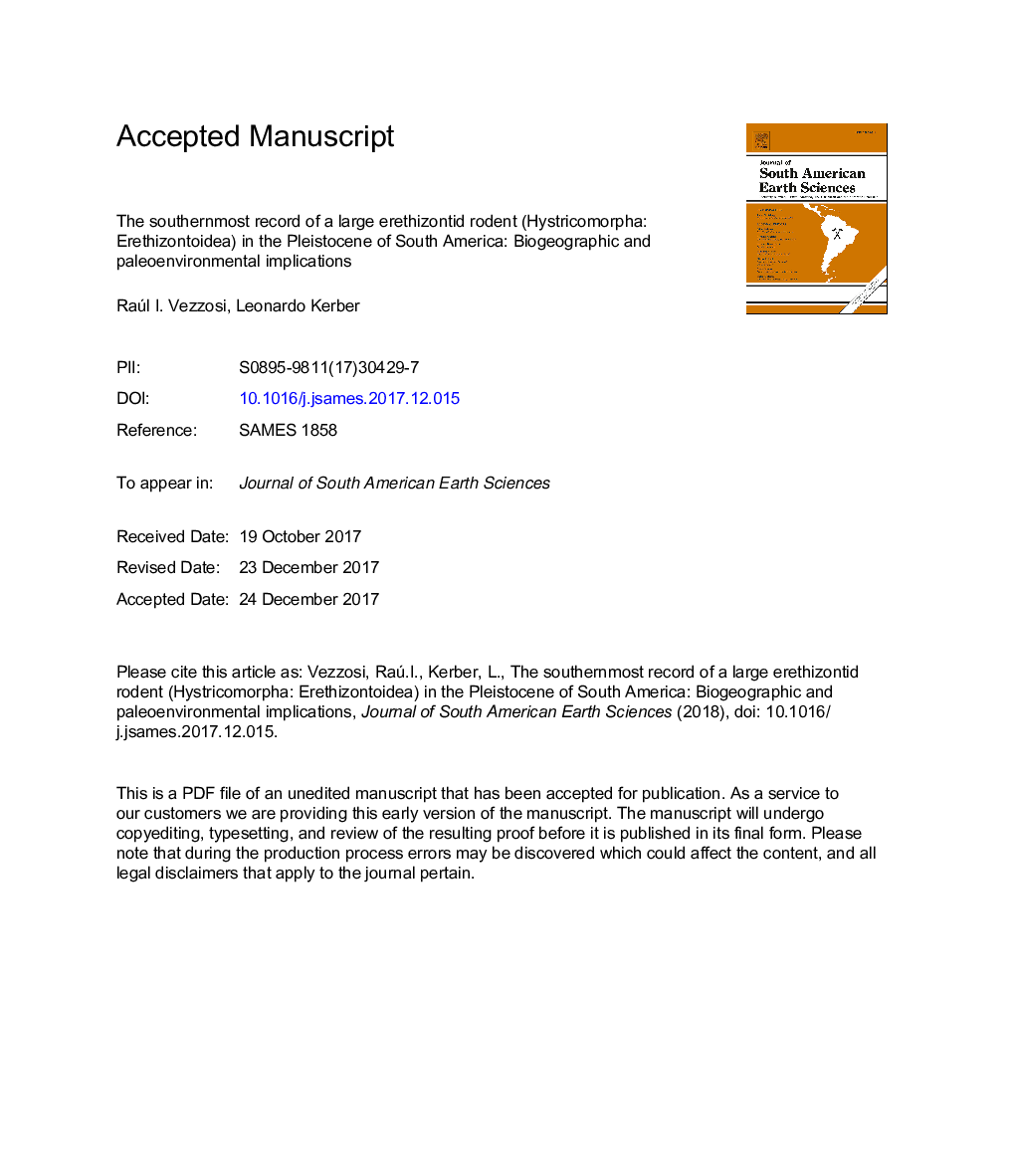| Article ID | Journal | Published Year | Pages | File Type |
|---|---|---|---|---|
| 8907722 | Journal of South American Earth Sciences | 2018 | 49 Pages |
Abstract
The South American porcupines (Erethizontidae) are included in two genera: Chaetomys and Coendou. The latter is a very speciose taxon, with about 13 living species. During at least the late Pliocene-early Pleistocene, erethizontids immigrated to Central and North America during the Great American Biotic Interchange. Although some Pleistocene fossils have been reported, the Quaternary history of this clade is still understudied. The only known extinct species is Coendou magnus. In this work, a fossil of a porcupine is reported from an Upper Pleistocene fluvial sedimentary sequence cropping out in the Northern Pampa geomorphological region, Santa Fe Province, Argentina. Despite this group having different living forms widely distributed in South American Neotropical woodland habitats, the Pleistocene occurrences of Erethizontidae are scarce and limited to Upper Pleistocene deposits from Bolivia, Brazil, and Uruguay. Currently, the specimen here reported represents the only Pleistocene porcupine from Argentina with a stratigraphical context. The morphological characters as well as the dimensions indicate that it is close to the Pleistocene erethizontid Coendou magnus. In this context, the presence of this erethizontid in such a southern locality, together with other taxa recorded from this site and the associated geological and paleoenvironmental evidence, indicates subtropical conditions, compared with the current conditions, which may have allowed a southern displacement of taxa more related to woodlands and xeric subtropical environments.
Related Topics
Physical Sciences and Engineering
Earth and Planetary Sciences
Earth and Planetary Sciences (General)
Authors
Raúl I. Vezzosi, Leonardo Kerber,
